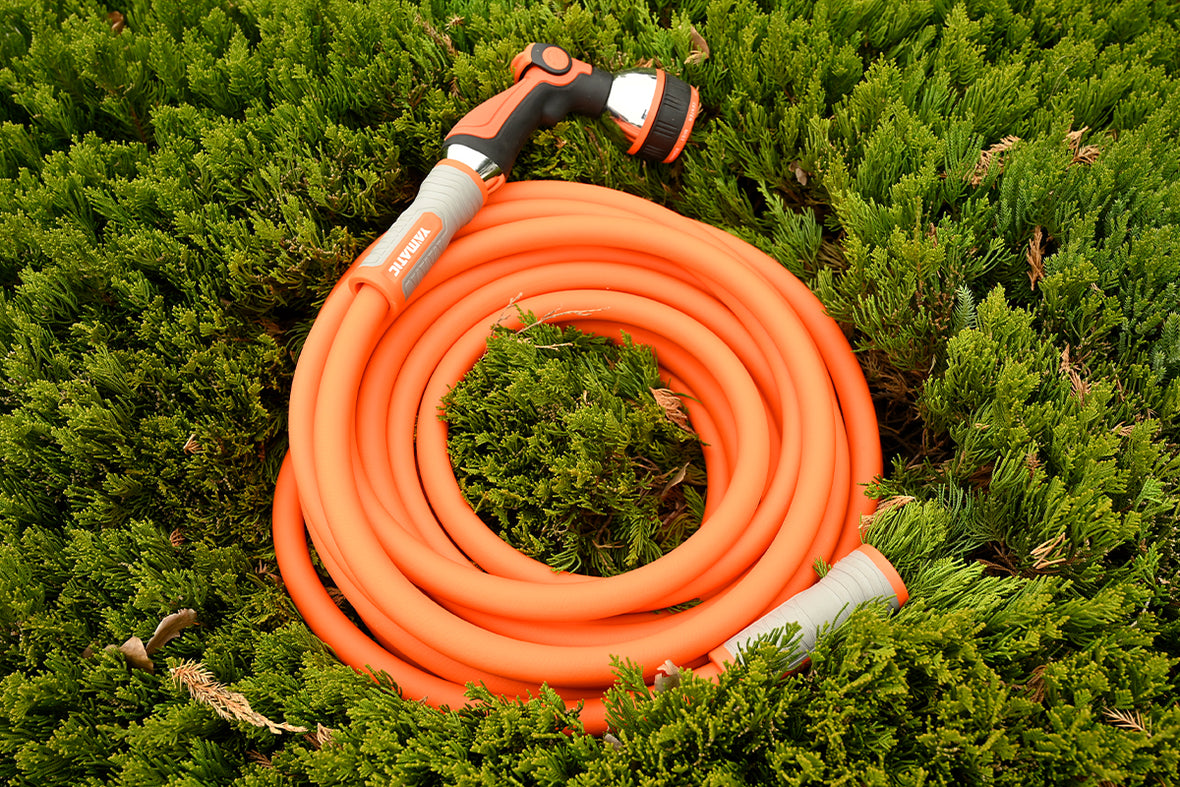
Garden hose selection guide
With so many garden hose options available, it can be tempting to choose the cheapest one. However, small differences in quality can significantly impact the hose's longevity and ease of use. A high-quality garden hose should last between 5 to 10 years, while lower-quality hoses may need replacement each year due to leaks, cracks, or rot. Investing in a durable hose from the start is often more cost-effective.
Important Considerations When Buying a Garden Hose
1. Hose Length – Longer Isn’t Always Better
- Available Lengths: 25, 50, 75, and 100 feet.
- Considerations: Longer hoses are more expensive, heavier, require more storage space, and can lead to lower water pressure. They are also harder to drain and store properly.
- Recommendation: Measure the distance from your spigot to the farthest point you need to reach. Choose a hose that extends just beyond this distance to avoid stretching and potential damage. For decks or balconies, a 25-foot hose is usually sufficient. For urban yards, a 50-foot hose is often enough. If you need more length, consider using two hoses connected together rather than one long hose.
2. Hose Diameter – Width Affects Water Flow
- Common Diameters: ¾ inch, 5/8 inch, and ½ inch.
-
Implications:
- 5/8 Inch: Provides a good balance of water flow and pressure without being too heavy.
- ½ Inch: Lightweight but carries less water. Suitable for light-duty tasks like watering containers. Not ideal for high-pressure uses or sprinklers.
- ¾ Inch: Carries more water but is heavier. Best for high-demand tasks.
3. Hose Strength – Check Burst Pressure
- Definition: Burst pressure indicates the maximum water pressure the hose can handle before rupturing.
- For Regular Use: Look for hoses with a burst pressure above 350 psi.
- For Pressure Washers: Consult your manual for the required burst pressure, which may need to be higher.

4. Couplings – Opt for Cast Brass
-
Types:
- Plastic Couplings: Less durable, prone to leaks, cracks, and breakage. They also degrade quickly under sunlight.
- Metal Couplings: Preferably cast brass or chrome-plated brass. Cast brass couplings are thicker, more durable, and offer better resistance to leaks. They usually have an octagonal shape for easier tightening with a wrench.
- Stamped Metal Couplings: Thinner, prone to bending, and less durable.



